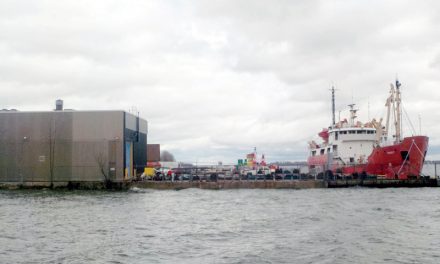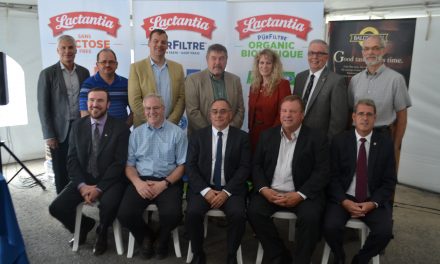By Tom Manley
AgriNews Contributor
The media is abuzz about inflation, including food price inflation, reporting 4.7 per cent generally on an annual basis in both October and November, the highest rate in 19 years. And all accounts suggest that it will get worse before it gets better. Explanations include disruptions in international supply lines due to the pandemic and weather extremes which impact food prices in particular.
Any price inflation impacts people negatively because their cost of living tends to go up sooner than their income. Nevertheless, an increase in personal income follows inevitably and the household situation usually stabilizes soon thereafter.
Food price inflation affects people differently. For one, there is little sympathy for the folks with the income to push housing prices to astronomical levels. Likewise, food price inflation is not much of a concern for those with the disposable income that saw the economy shift towards home renovations, outdoor recreational vehicles, and other lifestyle purchases that became popular during the pandemic.
But there are large parts of the population that feel the pinch of food price inflation, such as workers affected by layoffs in the service, entertainment, travel, and tourism sectors. The big, essential, items in their cost of living are rising too quickly for them to keep up, namely rent, food, and energy.
Global logistics’ disruptions and weather extremes show that our food system depends heavily on concentrated long-distance supply chains. We came to love them because they deliver economies of scale, ensure low food prices relative to our total cost of living, and offer us fresh and unusual products from around the world.
We now see how concentrated long-distance supply chains are very fragile, carry risks and are the single source of food price inflation. When we put too many eggs in one basket, the basket then becomes a large target and any damage to the basket hurts a lot of people. As my military training taught me, we should always manage risk by the dispersion of assets.
For one, concentrated long-distance supply chains are readily disrupted by outside forces, such as labour shortages due to a pandemic, issues with the international oil supply, fluctuations in currency rates, or geo-political turmoil. Secondly, a regional weather disaster, such as the current impact of climate change, affects the worldwide supply of a commodity and the global price of that commodity.
The food system requires a new balance of local and global supply. The current system relies on long distance suppliers for the core volume of food stuffs. Many local suppliers are currently relegated to niche products, lifestyle choices, and contingency options. This situation needs to be reversed. The food system needs to rely primarily on a dispersed local production capacity that contains inherent local backup options.
For example, right-sized beef farms (meaning a mix of artisanal and medium scale) supported by a local network of abattoirs and distributors should be the main meat supply in any region. The local food system should then be able to call upon long distance suppliers for a complementary supply of foreign niche products, a top-up supply in peak season, and a replacement supply in the event of a local challenge or disaster.
The supply managed sectors of poultry, turkey, dairy, and eggs are examples of resilient regional food systems in Canada, equipped with provincial supply management and national coordination. This system is highly resilient given the close proximity of producers, processors and consumers. It has the right scale at all steps of production without the mega farms that can be found in the US. It is profitable for all the players. The system can move products across Canada to fill supply gaps. Yet, it still delivers an affordable and stable price to the consumer.
Since the supply managed commodities are largely immune to the global shifts in demand and prices of these commodities, they provide great price stability for producers, processors and consumers. They are nevertheless affected by the global prices for their inputs such as energy, feeds, and equipment.
While the public debate over supply management was very focused on price stability, governments can now recognize the value of supply management as a crises avoidance strategy. While pandemics and climate change are disrupting our supply chains, governments need to look at more resilient food supply strategies at home.
The supply management system is not perfect in Canada. For example, it needs to develop methods to open up the entry level for new producers, such as the Artisanal Chicken Program from the Chicken Farmers of Ontario.
It is time for Canada, and probably any country, to consider the benefits of local supply chains that sustain farmers, local economies, and consumers. To that point, we witnessed the turmoil in India as farmers rejected the government’s plan to “modernize” agriculture, which was another word for shifting economic power from farmers to international commodity buyers and driving the consolidation of agricultural production.












